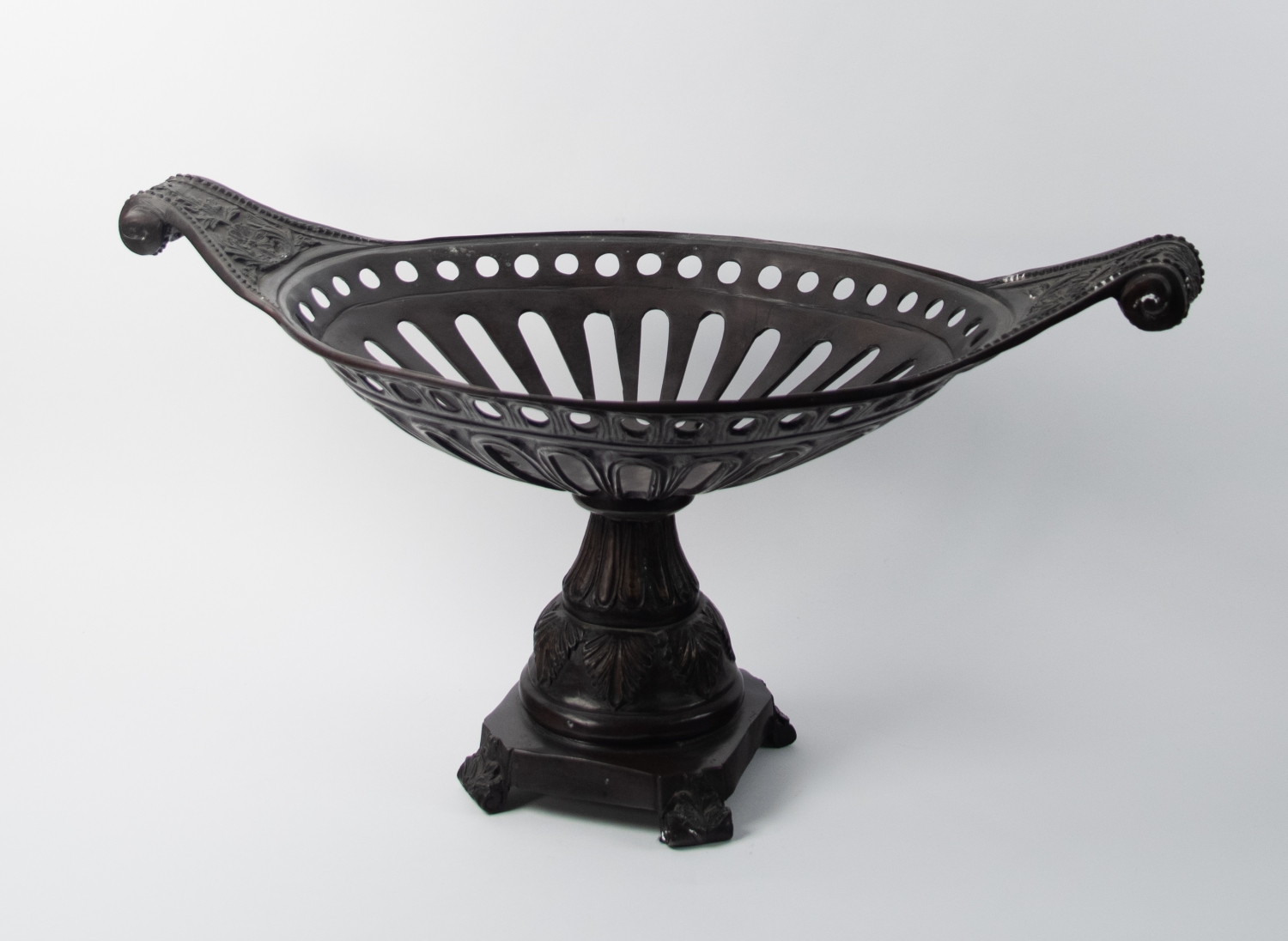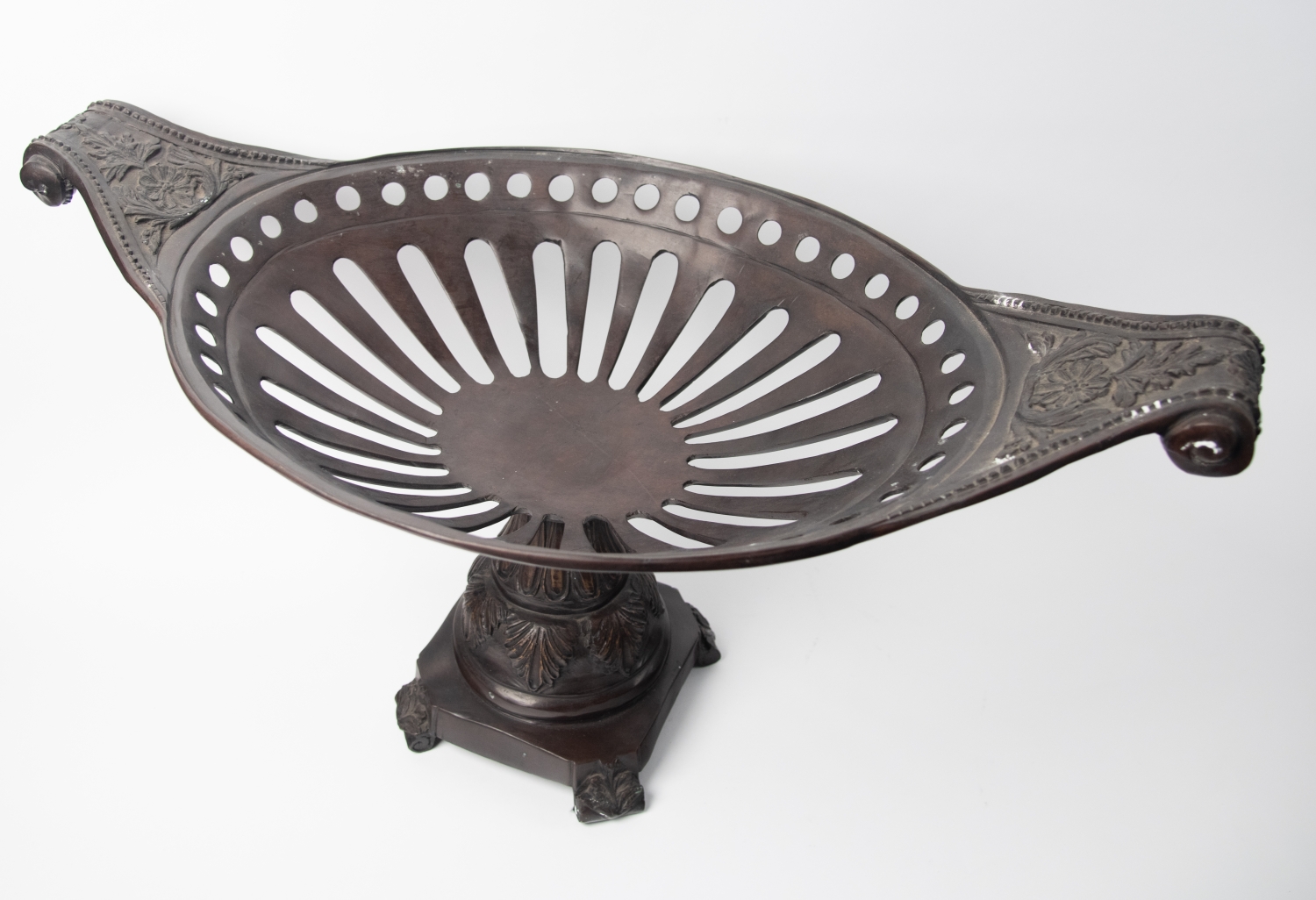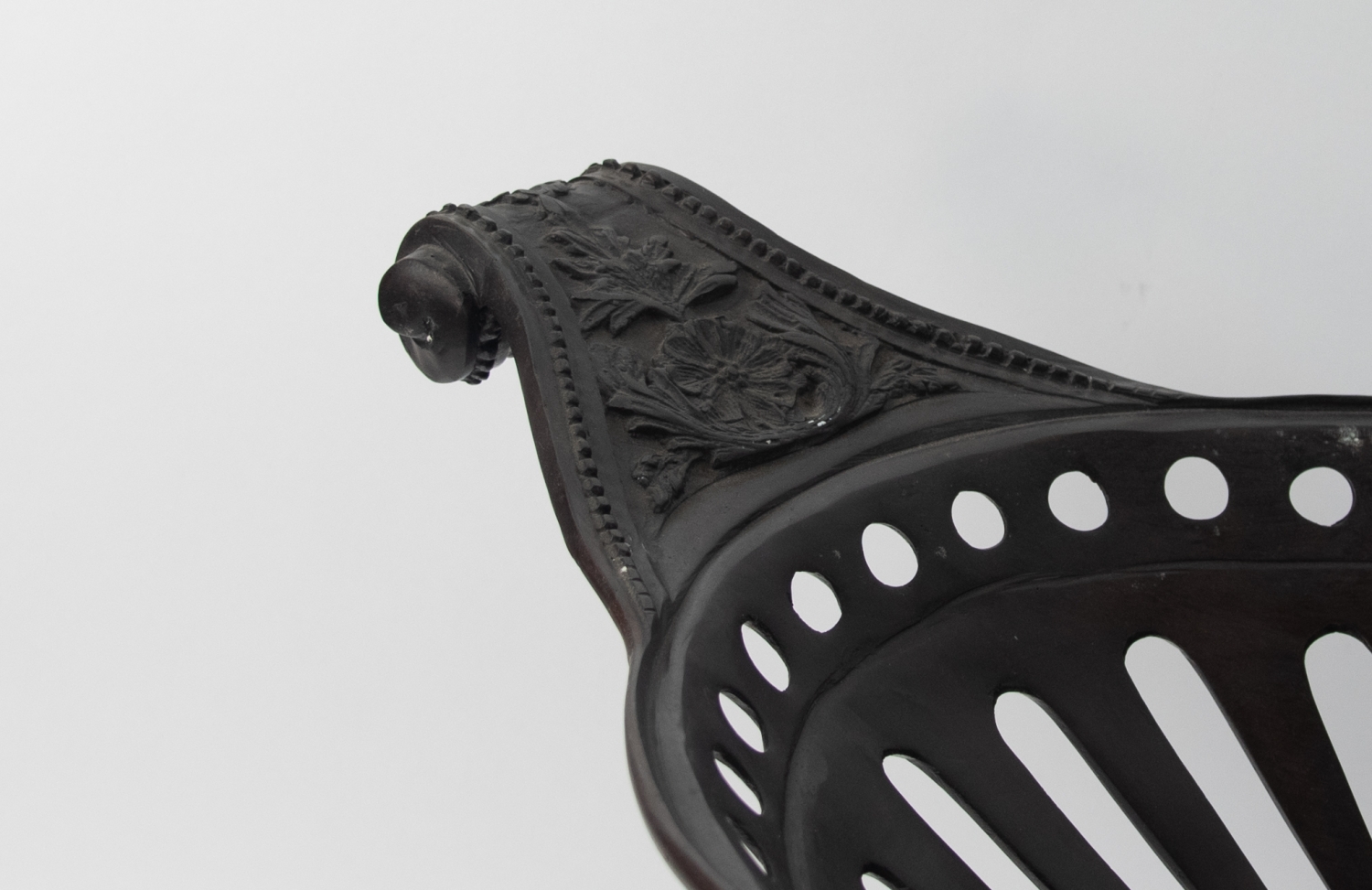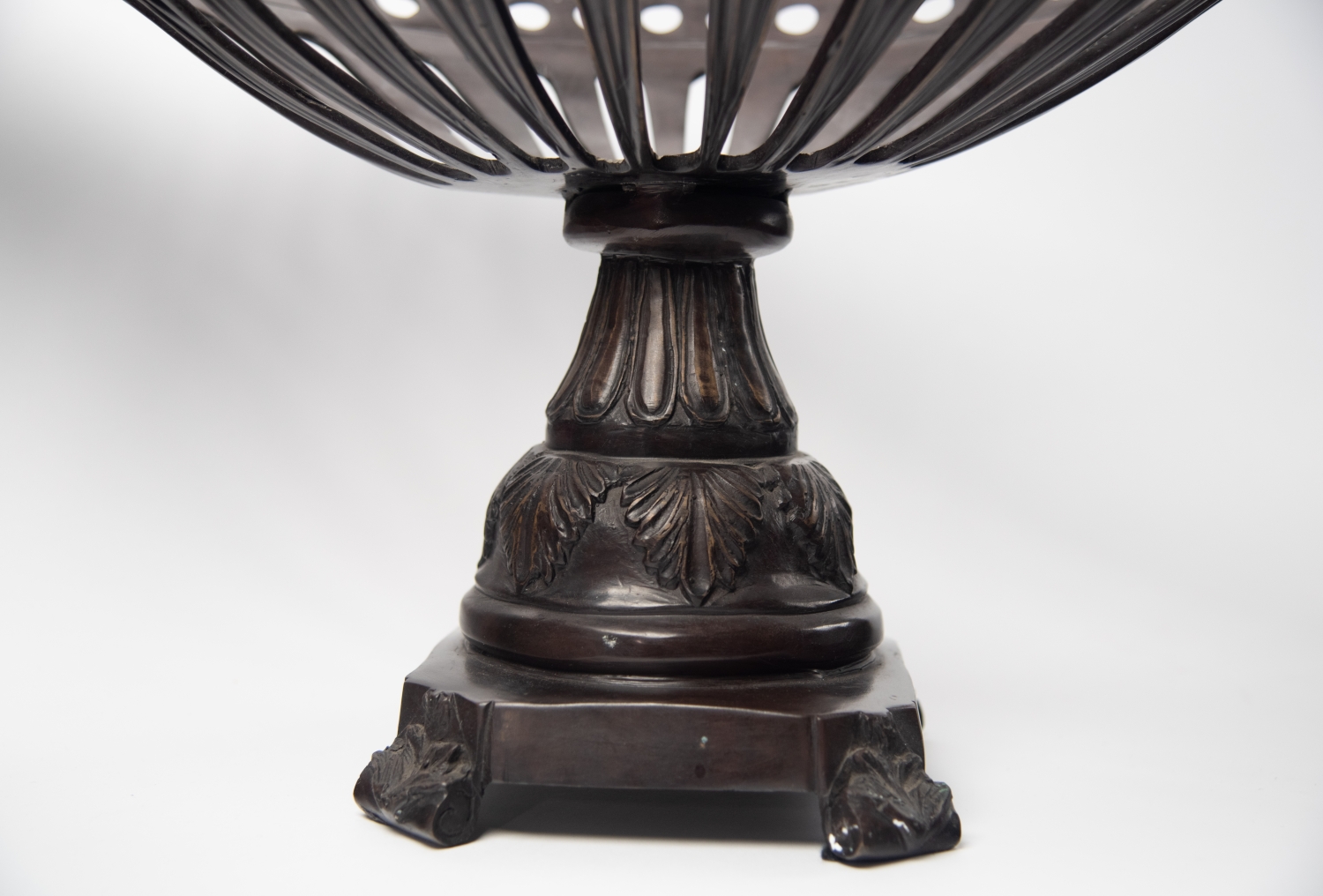Services, including logging in to resources, will be temporarily down for maintenance the evening of Friday, October 17.
Bronze Renaissance Bowl
The use of bronze became popular in 15th century Europe as a means to bridge ornament in sculpture with a faster rate of production. Artists employed the lost-wax method where wax models of sculpture would be encased by a mold wherein molten bronze would be poured over the wax model and once set the wax would be melted out, leaving a bronze production of the sculpture. With reusable molds and the availability and durability of bronze this method allowed artists to reproduce sculpture and objects like this serving bowl at a faster rate and higher quantity for a flourishing Europe. The floral ornament and elegantly scrolled handles of this functional piece would have achieved the merging of art and life sought during this era.









